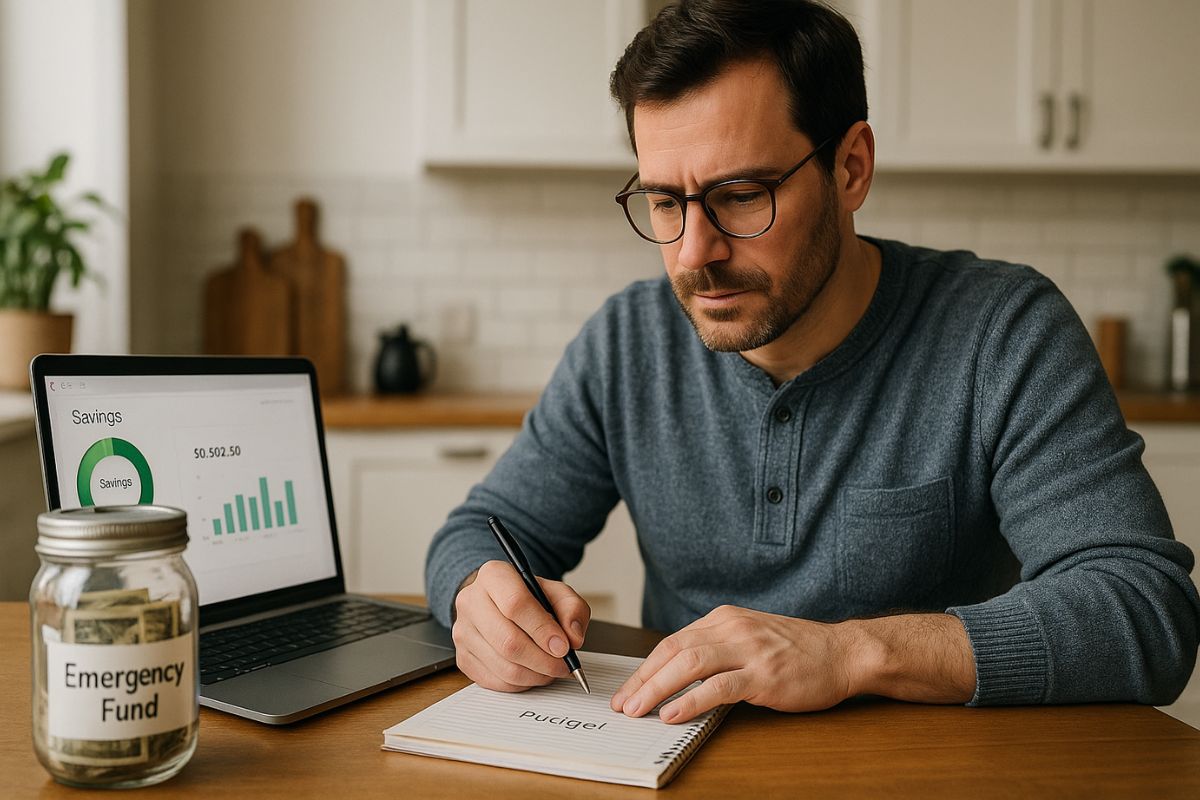Life doesn’t always go as planned. The car breaks down, a medical bill pops up, or a job change hits out of nowhere. That’s where an emergency fund comes in. It’s a simple idea that can bring real peace of mind. For dads managing the household budget or young adults just starting out, this one financial move can make a big difference.
An emergency fund isn’t just a savings account—it’s a safety net. It keeps you from turning to credit cards or loans when something unexpected happens. And while starting one might seem like a challenge, the steps are easier than you might think.
What This Guide Covers About Building an Emergency Fund
This post is all about practical steps. You’ll learn:
- Why an emergency fund matters in everyday life
- How to set a goal that works for your situation
- Easy ways to save without turning your budget upside down
- How to keep your fund safe but easy to access
Whether you’re living paycheck to paycheck or just looking to be more prepared, these steps can help you feel more in control of your money.
Why an Emergency Fund Is a Good Idea
Emergencies don’t give a heads-up. One surprise expense can throw off your entire month—or more. That’s why having some cash set aside makes sense. It lets you handle the problem without panic.
The goal is to avoid going into debt for things like car repairs, vet bills, or sudden travel. Even a few hundred dollars saved can soften the blow of an unexpected hit.
An emergency fund also takes pressure off your day-to-day budget. It gives you breathing room. That peace of mind is worth a lot, especially when you’re juggling bills, groceries, and other priorities.
Pick a Target That Feels Doable
Some experts suggest saving three to six months of expenses. But that number can feel too big when you’re starting out. Don’t let that stop you. Start small.
Aim for $500 or $1,000 if that feels more realistic. That amount can cover most short-term issues and give you a solid starting point. Once you reach that, you can build toward a larger cushion.
Think about what your regular expenses look like. Rent or mortgage, groceries, utility bills—these are the basics your fund should support. If you’re self-employed or have kids, you might want a little more set aside.
Also, keep in mind that your emergency fund isn’t a one-size-fits-all solution—it should grow with your life. As your income increases or your responsibilities shift, revisit your savings goal. For example, a single person renting an apartment may need less than a family with a mortgage and medical needs. Reassessing your fund regularly ensures it stays aligned with your current lifestyle and provides the peace of mind you’re working toward.
Open a Separate Account
It helps to keep your emergency fund in a separate savings account. That way, you’re less likely to dip into it for everyday spending.
Look for an account with no fees and easy access. Online banks often have good options with higher interest rates. Just avoid accounts that are tied to debit cards or ones you can tap into with a quick swipe.
Keeping the money a little out of reach helps make sure it stays there until you truly need it.
Start Saving with Small Steps
You don’t have to save a huge amount all at once. A few dollars at a time can get you going. Even setting aside five or ten bucks a week can build up faster than you expect.
If you get paid regularly, consider setting up automatic transfers. Treat it like a bill you pay yourself. You can always adjust the amount as your situation changes.
Got a tax refund, bonus, or birthday cash? That’s a great time to grow your fund without touching your regular budget.
Look for Easy Ways to Cut Back
Sometimes the money for saving is already in your budget—you just haven’t spotted it yet. Maybe there’s a streaming service you barely use or a subscription you forgot about. Cutting one small thing can free up cash to build your safety net.
You can also try bringing lunch from home more often or skipping that extra coffee run. Little choices like these can add up to real savings over time.
The idea isn’t to go without the things you enjoy. It’s to shift a bit toward future security, so that when a rainy day comes, you’re ready.
Keep It for Real Emergencies
Once your fund starts growing, it can be tempting to dip into it. That’s why it helps to set a clear rule for yourself: only use it for real emergencies.
Unexpected car repairs, medical bills, or job loss—those are good reasons. A weekend trip or new gadget probably isn’t.
If you do need to use it, don’t feel bad. That’s what it’s there for. Just try to build it back up as soon as you can.
Celebrate Progress, No Matter the Size
Saving money is a win—especially when life is busy and expenses keep coming. Every deposit, no matter how small, moves you in the right direction.
Take a moment to recognize your progress. Even hitting your first $100 is something to feel proud of. That momentum can keep you motivated to stay consistent.
Money can be a stressful topic, but having an emergency fund helps you feel less anxious about what might happen next. That confidence can spill over into other parts of your life too.
Building an emergency fund doesn’t have to be complicated. With clear steps and steady habits, you can create a buffer that protects your family, your wallet, and your peace of mind.
